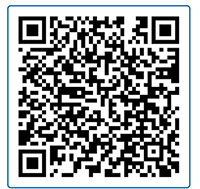Because Commercial Motor Vehicle (CMV) drivers often travel to new cities and towns, they may be unfamiliar with the roadway and feel compelled to read a map or directions while driving. The Large Truck Crash Causation Study (LTCCS) reported that 22 percent of large-truck crashes occurred when CMV drivers were unfamiliar with the roadway.
Below are some tips that will help you maintain your route and prevent a crash while driving on unfamiliar roads.
TIP #1: Review Maps and Plan Your Route Before Driving
Be sure to plan your driving route before getting behind the wheel so you can keep your schedule and prevent distractions that may occur while trying to read a map or directions. You may use electronic devices, such as a navigation system, to aid you when you are unfamiliar with the roadway. However, remember to use technology appropriately (pull safely to the side of the roadway or stop and take a break), otherwise it can be a source of distraction.
Did You Know? When transporting hazardous materials, remember that most states and localities have route restrictions and/or designated routes. You must carry a written copy of your route plan, and you must follow that plan if you are carrying Division 1.1, 1.2 or 1.3 explosives.
Did You Know? An independent CMV driver from Philadelphia received a $17,751 traffic ticket for exceeding the road weight limit when he got lost in a suburban neighborhood of East Whiteland Township, PA. He was unfamiliar with the area and had difficulty following the directions that were provided to him.
An example of a CMV driver, unfamiliar with the road he is driving on, is shown in the video clip below. Training exercise questions follow the video clip.
VIDEO DESCRIPTION: The CMV driver is traveling in the far right lane of a multi-lane highway during the day. The driver’s lane becomes an exit lane and suddenly bears to the right. The driver brakes quickly and crosses two lanes of traffic to maintain his original route. The driver changes lanes directly in front of another vehicle.
TRAINING EXERCISE: After viewing the video, try to answer the following questions:
- What behaviors indicated that the driver was unfamiliar with the roadway?
- How did the driver behave when he recognized that he was in the wrong lane?
- Why was the driver's maneuver unsafe?
- What should the driver have done differently?
TIP #2: Do Not Suddenly Change Your Direction of Travel
If you miss a turn or an exit, pass the turn and find a safe way to change direction. Do not take shortcuts. Trying to suddenly correct a missed turn or exit may result in you performing an illegal or unsafe maneuver which may threaten your safety and the safety of the vehicles around you.
Did You Know? From 2004 to 2007 almost 50,000 moving violations were classified as an improper turn or an improper lane change.
TIP #3: Signal Your Intentions
Use turn signals first to indicate your intent to change lanes, next visually scan for adjacent traffic and road hazards, and then execute a safe lane change. By signaling your intentions well in advance, you will be in a safer position to communicate with the surrounding drivers and you will be able to safely execute the desired driving maneuver.
Did You Know? A recent study reported that there are approximately 630,000 lane-change crashes annually (including both large trucks and passenger vehicles).
?









